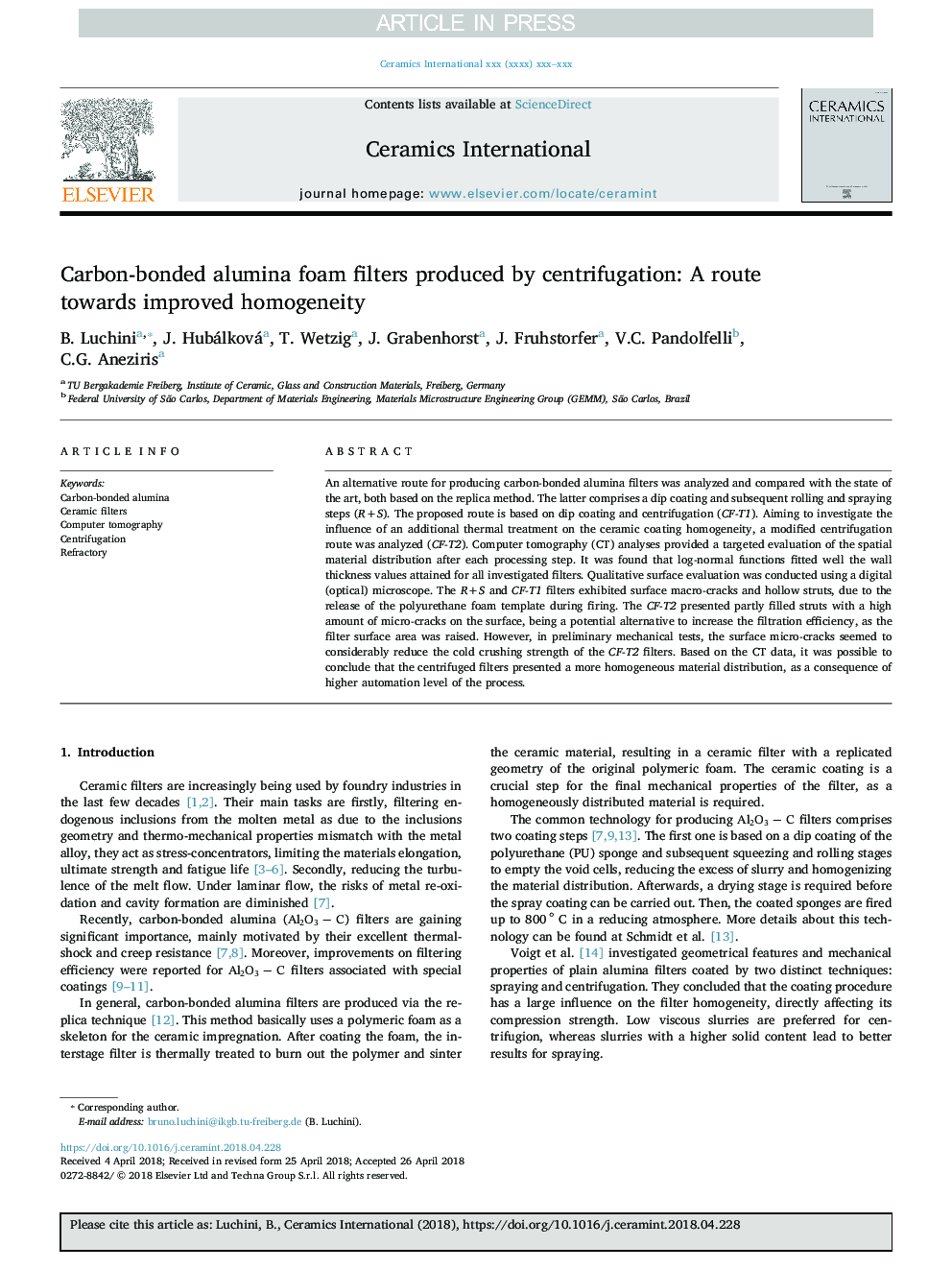| Article ID | Journal | Published Year | Pages | File Type |
|---|---|---|---|---|
| 7886517 | Ceramics International | 2018 | 9 Pages |
Abstract
An alternative route for producing carbon-bonded alumina filters was analyzed and compared with the state of the art, both based on the replica method. The latter comprises a dip coating and subsequent rolling and spraying steps (R+S). The proposed route is based on dip coating and centrifugation (CF-T1). Aiming to investigate the influence of an additional thermal treatment on the ceramic coating homogeneity, a modified centrifugation route was analyzed (CF-T2). Computer tomography (CT) analyses provided a targeted evaluation of the spatial material distribution after each processing step. It was found that log-normal functions fitted well the wall thickness values attained for all investigated filters. Qualitative surface evaluation was conducted using a digital (optical) microscope. The R+S and CF-T1 filters exhibited surface macro-cracks and hollow struts, due to the release of the polyurethane foam template during firing. The CF-T2 presented partly filled struts with a high amount of micro-cracks on the surface, being a potential alternative to increase the filtration efficiency, as the filter surface area was raised. However, in preliminary mechanical tests, the surface micro-cracks seemed to considerably reduce the cold crushing strength of the CF-T2 filters. Based on the CT data, it was possible to conclude that the centrifuged filters presented a more homogeneous material distribution, as a consequence of higher automation level of the process.
Related Topics
Physical Sciences and Engineering
Materials Science
Ceramics and Composites
Authors
B. Luchini, J. Hubálková, T. Wetzig, J. Grabenhorst, J. Fruhstorfer, V.C. Pandolfelli, C.G. Aneziris,
